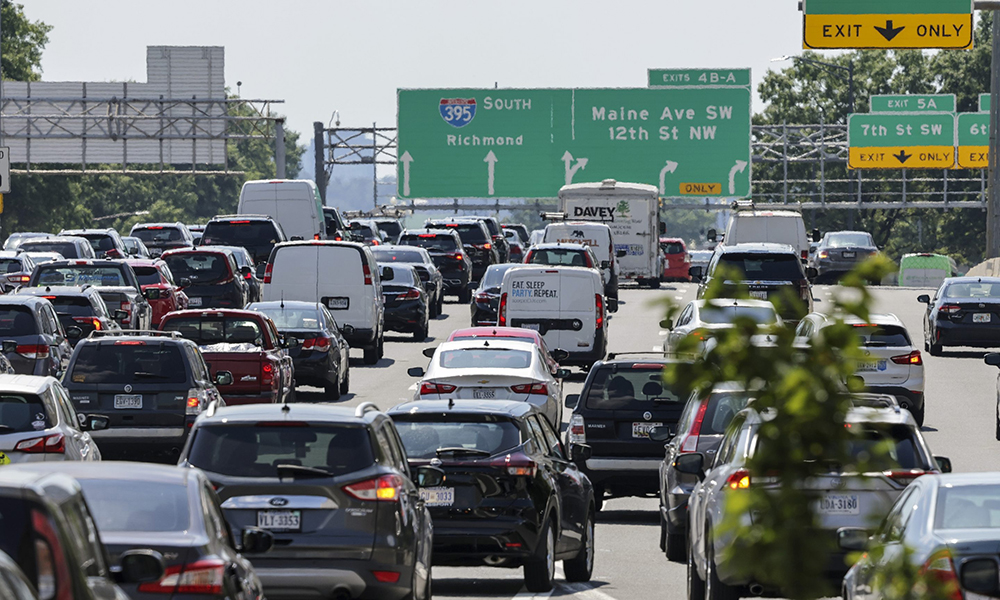
在引发人们的恐慌和烦恼方面,可能除了“根管治疗”或“有意分开”之外,鲜有词语或短语能与“通勤”一词媲美。如今的通勤更加费钱费时,对于美国民众来说,通勤这个概念可能比新冠疫情前更令人苦恼。
房地产中介服务公司Clever Real Estate对多项政府数据的计算结果显示,美国民众平均每年在通勤上耗费的金钱和时间分别为8466美元和239个小时。该机构还评选了通勤最好和最差的城市。上述费用和时间较新冠疫情前分别增长了31%和20%;2019年平均每位工人的通勤成本为6499美元和200个小时。Clever发现,如今往返于办公室的成本约占通勤者年收入的19%,其中包括平均867美元的汽车油费和410美元的汽车维护费(很明显,一些通勤者搭乘的是公共交通)。
创40年新高的高通胀,俄乌冲突以及美国油转气产能下滑,这些因素在去年都成为了油价上涨的推手(今年,像纽约这类大城市的地铁票也将涨价),如今在车里打开美国国家公共电台(NPR),收听主持人美妙柔和的播音变得越来越贵。一些在新冠疫情期间从高成本城市搬走、远程工作的员工如今回到了办公室,采取混合或完全办公室办公,通勤时间因此变得更长(而且更加昂贵)。
有鉴于如此沉重的经济负担以及大量时间的耗费,难怪很多员工在首席执行官呼吁回归办公室办公时都表现出了抗拒的情绪。在经济下行和通胀期间,员工正在努力寻求削减成本,这也是2022年冬天远程工作再次回弹的原因。领英(LinkedIn)资深自由编辑乔治·安德斯告诉《财富》杂志:“远程工作通常更省钱,因为它将通勤成本降低到了零,同时还能让午餐、咖啡等变得更便宜。”
Owl Labs的研究发现,远程工作员工所花的钱只有其在办公室办公的同僚的一半(诚然,Owl Labs的员工与该趋势多少有点关联,因为他们主攻视频会议设备);在办公室办公每个月在通勤和食物方面的花费为863美元,而居家员工每月为432美元。当然,也得看具体情况。账单服务Doxo向《财富》杂志提供的数据显示,对于美国人来讲,居家工作并不一定能自动省钱,因为每月的电费和燃气费要比新冠疫情之前多出23美元,完全看你怎么取舍。
然而,令那些通勤的人员感到无奈的是,有时候他们面对的是一个基本上没人的办公室。 Allstate首席执行官汤姆·威尔逊在接受Fortune Connect采访时表示:“没有人希望开车到办公室进行Zoom电话会议。通勤的作用真的是被大大高估了。”
他的评论与很多高管大相径庭,这些高管认为,回归办公室会提升员工的生产力。然而,如果这些首席执行官进一步了解相关数据就会发现,员工所浪费的那点时间基本上都是花在了上班通勤上。美国国家经济研究局(National Bureau of Economic Research)发布的一份工作论文显示,2021年和2022年,居家办公节省了员工72小时的日常通勤时间。该研究发现,很多员工实际上将这部分额外省下来的时间用来工作,使得生产力天平反而向远程办公的员工倾斜。
这并不是说通勤一点好处都没有,它可以作为一种有助于员工脱离工作的“阈限空间”(liminal space)。不过,如果无需通勤会节省员工的金钱和时间,并提升其生产力,那么我们也就能够理解,完全回归办公室上班相当于减薪2%-3%,有可能会让雇员萌发辞职的念头。毕竟,像“超能先生”帕波那样坐在一辆光鲜亮丽的汽车中也得花个几千美元。(财富中文网)
译者:冯丰
审校:夏林
在引发人们的恐慌和烦恼方面,可能除了“根管治疗”或“有意分开”之外,鲜有词语或短语能与“通勤”一词媲美。如今的通勤更加费钱费时,对于美国民众来说,通勤这个概念可能比新冠疫情前更令人苦恼。
房地产中介服务公司Clever Real Estate对多项政府数据的计算结果显示,美国民众平均每年在通勤上耗费的金钱和时间分别为8466美元和239个小时。该机构还评选了通勤最好和最差的城市。上述费用和时间较新冠疫情前分别增长了31%和20%;2019年平均每位工人的通勤成本为6499美元和200个小时。Clever发现,如今往返于办公室的成本约占通勤者年收入的19%,其中包括平均867美元的汽车油费和410美元的汽车维护费(很明显,一些通勤者搭乘的是公共交通)。
创40年新高的高通胀,俄乌冲突以及美国油转气产能下滑,这些因素在去年都成为了油价上涨的推手(今年,像纽约这类大城市的地铁票也将涨价),如今在车里打开美国国家公共电台(NPR),收听主持人美妙柔和的播音变得越来越贵。一些在新冠疫情期间从高成本城市搬走、远程工作的员工如今回到了办公室,采取混合或完全办公室办公,通勤时间因此变得更长(而且更加昂贵)。
有鉴于如此沉重的经济负担以及大量时间的耗费,难怪很多员工在首席执行官呼吁回归办公室办公时都表现出了抗拒的情绪。在经济下行和通胀期间,员工正在努力寻求削减成本,这也是2022年冬天远程工作再次回弹的原因。领英(LinkedIn)资深自由编辑乔治·安德斯告诉《财富》杂志:“远程工作通常更省钱,因为它将通勤成本降低到了零,同时还能让午餐、咖啡等变得更便宜。”
Owl Labs的研究发现,远程工作员工所花的钱只有其在办公室办公的同僚的一半(诚然,Owl Labs的员工与该趋势多少有点关联,因为他们主攻视频会议设备);在办公室办公每个月在通勤和食物方面的花费为863美元,而居家员工每月为432美元。当然,也得看具体情况。账单服务Doxo向《财富》杂志提供的数据显示,对于美国人来讲,居家工作并不一定能自动省钱,因为每月的电费和燃气费要比新冠疫情之前多出23美元,完全看你怎么取舍。
然而,令那些通勤的人员感到无奈的是,有时候他们面对的是一个基本上没人的办公室。 Allstate首席执行官汤姆·威尔逊在接受Fortune Connect采访时表示:“没有人希望开车到办公室进行Zoom电话会议。通勤的作用真的是被大大高估了。”
他的评论与很多高管大相径庭,这些高管认为,回归办公室会提升员工的生产力。然而,如果这些首席执行官进一步了解相关数据就会发现,员工所浪费的那点时间基本上都是花在了上班通勤上。美国国家经济研究局(National Bureau of Economic Research)发布的一份工作论文显示,2021年和2022年,居家办公节省了员工72小时的日常通勤时间。该研究发现,很多员工实际上将这部分额外省下来的时间用来工作,使得生产力天平反而向远程办公的员工倾斜。
这并不是说通勤一点好处都没有,它可以作为一种有助于员工脱离工作的“阈限空间”(liminal space)。不过,如果无需通勤会节省员工的金钱和时间,并提升其生产力,那么我们也就能够理解,完全回归办公室上班相当于减薪2%-3%,有可能会让雇员萌发辞职的念头。毕竟,像“超能先生”帕波那样坐在一辆光鲜亮丽的汽车中也得花个几千美元。(财富中文网)
译者:冯丰
审校:夏林
Commuting—not many words or phrases arguably strike as much dread and annoyance as this one, besides maybe “root canal” or “consciously uncoupling.” And the idea of commuting might be even more annoying than it was before the pandemic considering that it’s now costing Americans more money and time.
The average American shells out $8,466 and spends 239 hours commuting yearly, according to calculations of various government data from real estate agent matching service Clever Real Estate, which also gauged the best and worst cities for commuting. That’s 31% more money and 20% more time than before the pandemic; commuting cost the average worker $6,449 and 200 hours in 2019. Today’s cost of getting to and from the office is about 19% of commuters’ annual income, finds Clever; that includes an average of $867 on gas and $410 on maintenance a year for a car (obviously, some commuters take public transport).
The hike in price of listening to the dulcet tones of a soft-spoken NPR host in the car is the result of several factors: 40-year-high inflation, Russia’s invasion of Ukraine, and the U.S.’s declining capacity to turn oil into gas all pushed gas prices up last year (and this year, metro fare is also set to rise in big cities like NYC). And some remote workers who moved away from high-cost cities during the pandemic are now returning to the office on a hybrid or fully in-person schedule, making the commute a bit longer (and more expensive).
With such a hefty price tag and big chunk of time, it’s no wonder many workers are so resistant to commuting back to the office as CEOs call workers back to their desks. It explains why remote work rebounded again this past winter as workers looked to cut costs during a down economy and inflation. “Working remotely is often a money saver because it reduces commuting costs to zero, while also making lunch, coffee, et cetera, much more affordable,” George Anders, LinkedIn’s senior editor at large, explained to Fortune.
Remote workers spend half the amount of money as their in-person peers, finds research from Owl Labs (granted, they have a bit of stake in the game, since they make video conferencing devices); in-person work runs a worker $863 monthly in commuting and food costs versus $432 a month when working from home. Of course, it’s all dependent on the situation. Americans aren’t always automatically saving money by working from home—consider that monthly electricity and gas bills are $23 higher than they were before the pandemic, per data provided to Fortune by bill pay service Doxo. It’s all about the trade-offs.
But for those who do commute, it doesn’t help that they sometimes end up at a largely empty office. “Nobody wants to drive to an office to do a Zoom call,” Allstate CEO Tom Wilson said in an interview with Fortune Connect. “And commuting is way overrated.”
His comment is a strong departure from the opinions of many other executives, who reason that returning to office would increase worker productivity. But if these CEOs looked closer at the data, they’d find that workers waste a fair bit of time simply on the road to their jobs. A working paper published by the National Bureau of Economic Research revealed that working from home saved remote workers 72 hours in daily commute time in 2021 and 2022. Many employees, it found, actually spent that extra time working—tilting the scales of productivity toward the remote-work side.
That’s not to say there aren’t benefits to commuting, which can act as a “liminal space” that helps workers detach from work. But if having no commute saves workers money and time, and boosts their productivity, it makes sense that a full return to the office is just as likely to make an employee quit as a 2% or 3% pay cut. Sitting like Bob Parr, a.k.a. Mr. Incredible, in a shrinky-dink car costs thousands of dollars, after all.






